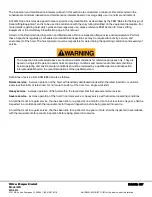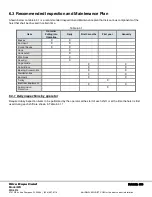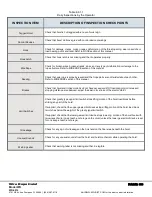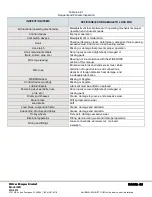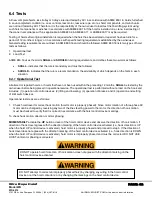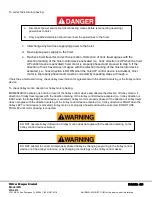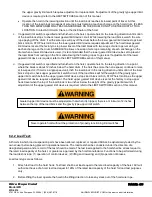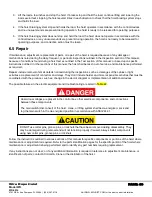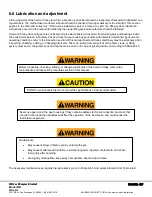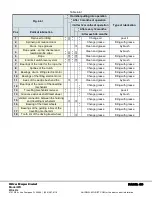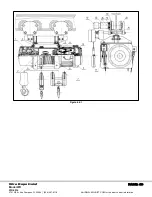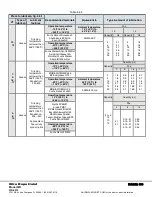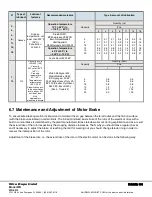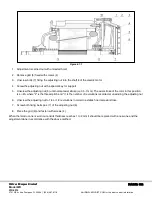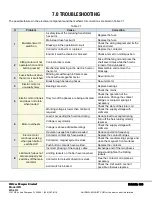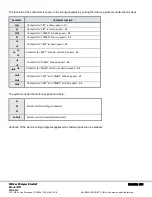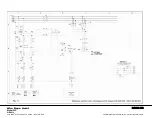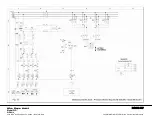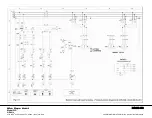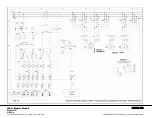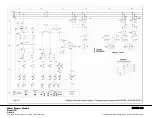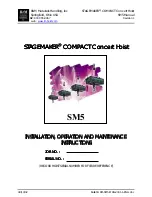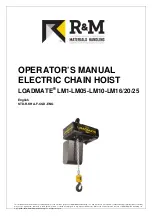
Wire Rope Hoist
PAGE: 51
Model WR
WR-0214
2721 NE 4
th
Ave Pompano FL, 33064 | (954) 367-6116
Visit WWW.ACIHOIST.COM for the most current information
#
Type of
lubricant
Lubricant
features
Recommended materials
Type & amount of lubrication
3,
4,
5,
6,
11,
15,
18
Grease
Dripping
temperature - not
lower than 203°F
(95°C)
Penetration:
220÷430
Operation temperature
13°F (-25°C) to
+176°F (+ 80°C)
Capacity
Quantity (oz)
Pos.
3
4
5
6
11
15
18
Aralub FDPO,
BP Energrease HT-EPOO
Esso Getriebfliessfett
Shell Special H
Mobil Gargoyle Fett 1200 W
3
5
7.5
10
15
20
2.1
2.1
2.1
2.6
3.2
3.2
2.1
2.1
2.1
2.6
3.2
3.2
2.1
2.1
2.1
2.6
3.2
3.2
0.2
0.2
0.2
0.2
0.2
0.2
1.4
1.4
1.4
1.4
1.4
1.4
0.5
0.5
0.7
0.7
0.9
0.9
1.4
1.4
1.4
1.8
2.1
2.1
Operation temperature
-40°F (-40°C) to
+248°F (+ 120°C)
Fuchs Renolit 500 EP
1,
13
Oil
Viscosity acc. to
ISO 220 (150)
Viscosity
220 cst at 140
°F
(40°C)
Freezing
temperature
-25° (-40°)
Temperature of
inflammation
190°C (180°)
Classification acc.
to the expolitation
levels as per API
not lower then
GL-4
Applicable to
planetary reducers
Mobil-Mobilgear 632,
Mobil-Mobilube GX90,
BP-Hypogear 90 EP,
Shell Spirax Heavy Duty 90,
EP 220 (Klueber, Syntheso),
D220 EP, Esso S220),
(Shell - Tivela-82)
Capacity
Quantity (Liter)
Pos.
1
13
3
5
7.5
10
15
20
0.8
0.8
0.8
1.2
2.0
2.0
0.6
0.6
0.6
1.0
1.75
1.75
6.7 Maintenance and Adjustment of Motor Brake
To ensure safe brake operation it's important to maintain the air gap between the ferodo disk and the friction surface
(with the brake unactuated) in certain limits. The initial (minimum) axial stroke of the rotor of the electric motors with a
built-in conical brake is determined by the plant-manufacturer. Brake ferodo wears out during exploitation and as a result
the axial stroke of the rotor respectively the stopping distance increases. That's why you should make regular checks
and if necessary to adjust the brake; at reaching the limit for wearing out you should change ferodo lining in order to
recover the initial position of the rotor.
Adjustment of the brake disc, i.e. the axial stroke of the rotor of the electric motor can be done in the following way:

